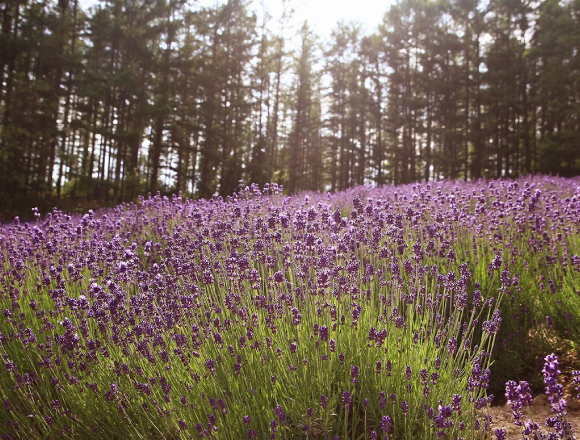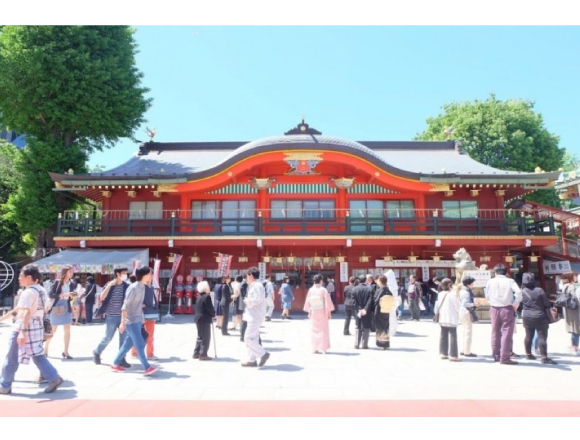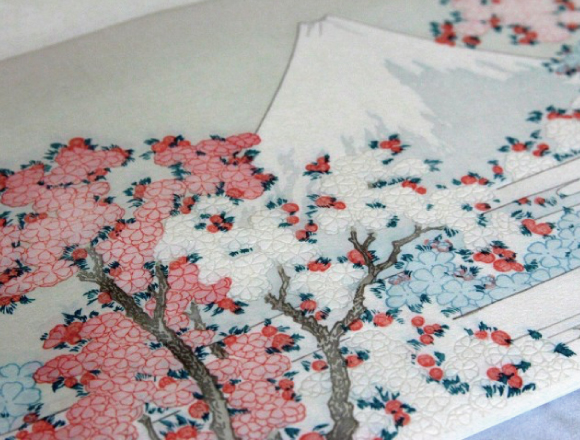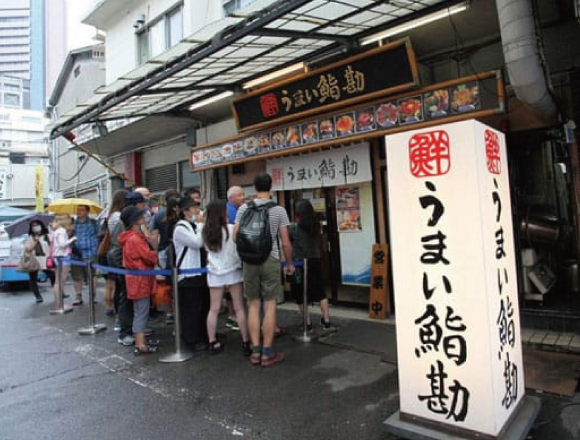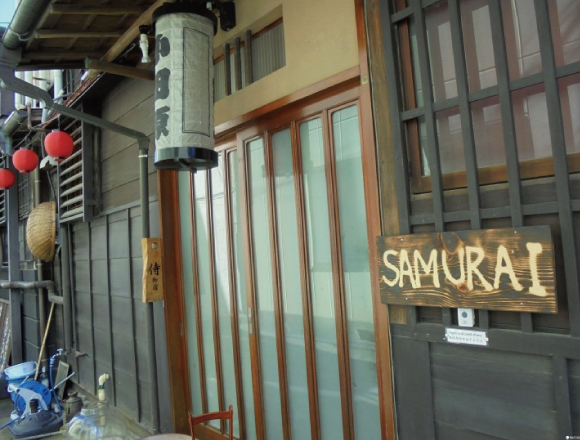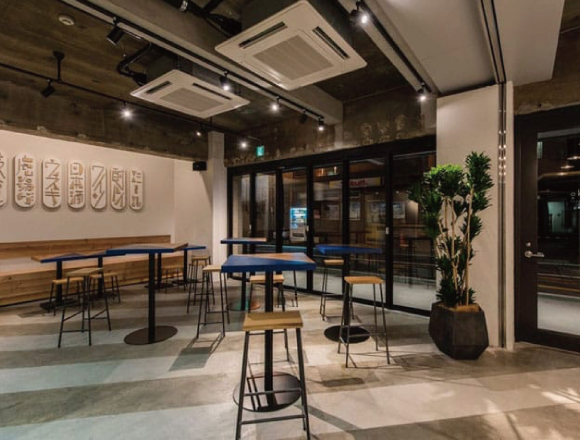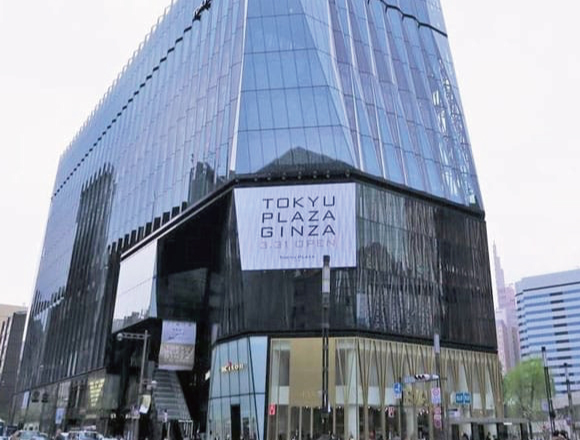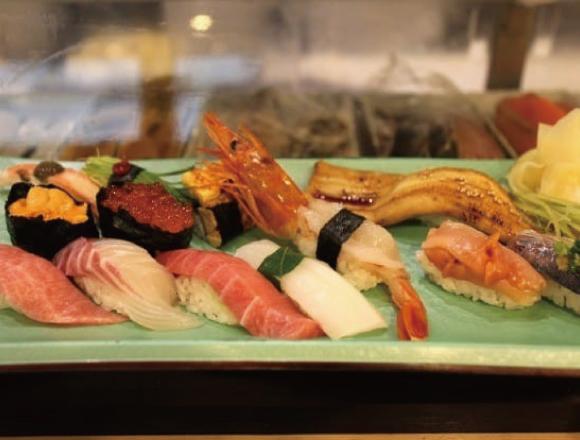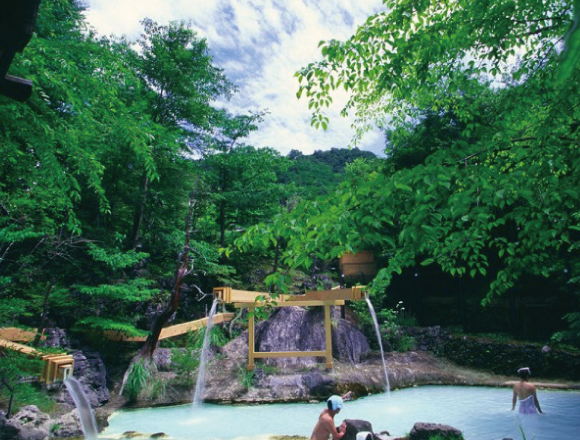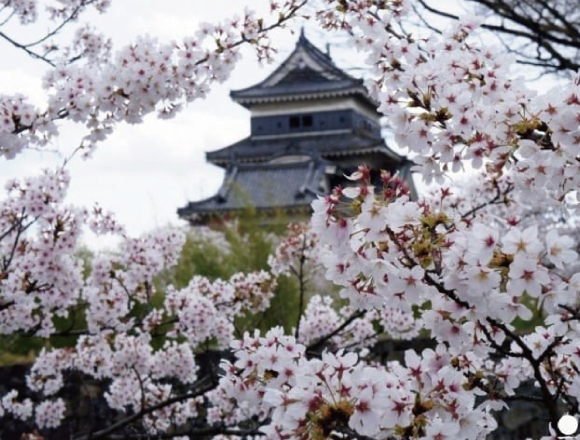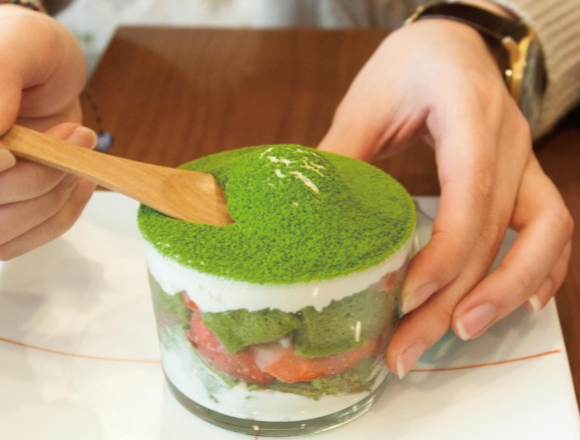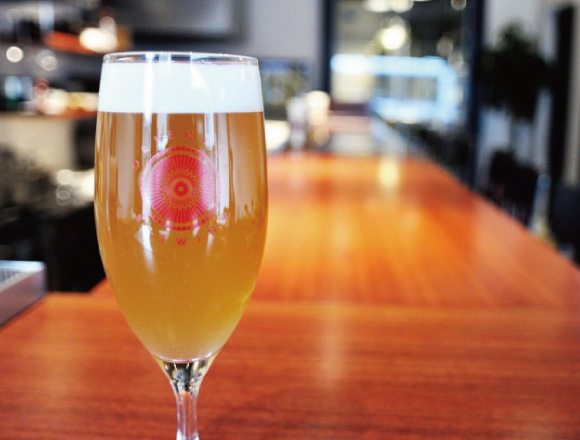If you’ve never experienced cherry blossom viewing in Japan, then you’re in for a big treat! The sakura blossom is Japan’s national flower and has been adored by the locals throughout the ages. Cherry blossom viewing events, called “hanami”, are an occasion to celebrate the coming of spring.
This photo book will attempt to capture the spirit of hanami in some of Tokyo’s famous cherry blossom viewing spots.
Sumida River

Water, sky and cherry blossom trees (sakura) create a heavenly atmosphere along Tokyo’s Sumida River in spring. This is one of the best places to get into the spirit of cherry blossom viewing (hanami).

Don’t let yourself be intimidated by the crowd. Let it encourage you to get into the spirit of Ohanami.

For centuries, there have been songs inspired by the sakura, which reveal the Japanese people’s fondness for the tree. When you see local musicians, be sure to dance when you get a chance.
RELATED ENTRIES
-
Furano And Biei In Hokkaido – A Summer Escape To A Fairytale World
18.April.2017 | SPOT
Hokkaido is famous for its snow festivals, ski resorts and the vast and calm scenery of the countryside. Now as winter is receding to the backstage and the sunlight of summer is drawing near, let’s get ready for a summer escape to the green and blue paradise of Furano and Biei.
But before we start our journey, let me give you some tips for a great trip at an affordable price.
Useful Tips for Your Trip to Hokkaido
*Tip 1: The sooner you book your tickets and accommodations, the cheaper they are! Plan your trip as early as possible so that you don’t miss a convenient deal. For a summer trip? Now is the time to start booking!
*Tip 2: If you come to the Furano-Biei area by airplane, instead of buying a direct ticket to Asahikawa Airport (which is the closest airport to this region), you can consider booking a flight to Sapporo (which normally will cost you only one third of the price to Asahikawa) and buy the Furano-Biei Free Ticket (“Furano-Biei Free Kippu”) at Shin-Chitose Airport (go to its JR station and ask for the ticket) and enjoy the spectacular view of Hokkaido through the windows of the JR trains.
This Free Ticket costs 6,500 yen for adults and 3,250 yen for children. It includes one return ticket from Sapporo to any station n the area covered by the Free Ticket (Takigawa, Asahikawa, Furano, Biei) and you can use it up to four days within the period from April 29th to October 31st.

The famous Norokko train of Hokkaido
Furthermore, if you prefer riding in an open car, so that can feel the smell of lavender and wildflowers and enjoy the panoramic view of the countryside, this ticket also offers you a seat on the famous no-glass-window Furano-Biei Norokko train! (Don’t forget to get a stamp of riding this famous train on your ticket. It will be an invaluable souvenir for you.)

With no glass windows, you’ll be able to enjoy the cool breeze.

As well as the panoramic view of Hokkaido!
*Tip 3: The changeable weather is one of the well-known characteristics of this region, so don’t forget to bring an umbrella or raincoat. A light wind jacket is also recommended as mornings and evenings tend to be cool.
Three Must-See Attractions in Furano-Biei
Attraction No. 1: Farm Tomita and the Lavender Fields

Let’s say goodbye to Norokko and head to our first destination – Farm Tomita. Just get off at Lavender Batake Station, follow the stream of people, and you’ll soon find Farm Tomita, which was listed as the no. 1 attraction in Furano by TripAdvisor.
Farm Tomita has many fields and gardens with various kinds of flower in bloom from spring to autumn. However, it’s lavender what has made this farm renowned worldwide.

The peak season for lavender this year will be around early and mid-July. Be sure not to miss the chance to see the wonderful lavender fields!
-
This is the Kanda festival, a festival centered around Kanda Myojin, a shrine in the Chiyoda ward of Tokyo. This happens to be one of the three biggest festivals in Japan alongside the Gion festival in Kyoto and the Tenjin festival in Osaka.
What Is the Kanda Festival?

© The Tokyo Sightseeing FoundationThe Kanda Festival is held at Kanda Shrine, which is located in the Chiyoda ward of Tokyo. Along with the Gion Festival in Kyoto and the Tenjin Festival in Osaka, this is one of the three biggest festivals in Japan. There are two different types of Kanda Festivals held: the Honmatsuri, which is held in odd numbered years, and the Kagematsuri, which is held in even years. However, when someone mentions the Kanda Festival, they’re usually referring to the lively Honmatsuri.
The Kanda Festival is also referred to as the Tenka Festival, or the Unification Festival. The connection to this name comes from Tokugawa Ieyasu who initiated the Tokugawa shogunate (*1). It is said that before going into battle with other warlords, Tokugawa would without fail make his servants go to the Kanda Shrine and pray for victory in the upcoming battle. By doing this, Tokugawa Ieyasu was able to wonderfully unify Japan. In gratitude to the shrine, he donated a gorgeous-looking shaden (the main building of the shrine) and an omikoshi (a portable shrine) to Kanda Shrine. Thanks to the support of Tokugawa Ieyasu, the festival held at this shrine reached impressive proportions.
The highlight of this festival is getting to see the shinkosai, which is a line of roughly 500 people who all wear clothing from the Heian period (794-1185). The shinkosai parade starts off at the Kanda Shrine, goes through Akihabara, an area which is well-known for its many electronic stores, goes through the office districts of Marunouchi and Otemachi, then makes its way back to Kanda Shrine. The sight of a line of people wearing clothing from the Heian period walking through the modern streets is very striking. The next day after the shinkosai is when the omikoshi comes out from the town neighboring Kanda Shrine.
We will introduce here some more information on the highlights of the Kanda Festival.
*1: Tokugawa shogunate: the Tokugawa family ruled Japan from 1603-1867. This is often referred to as theEdo period (1603-1868). This was a period that started off with the first shogun – Ieyasu Tokugawa, continuing until Tokugawa Yoshinobu gave over political power to Emperor Meiji.
The 2017 Kanda Festival
2017 is the year when the Honmatsuri version of the Kanda Festival will be held. The dates for this festival are written below.
The shinkosai: Saturday, May 13th, held all day.
The omikoshi procession: Sunday, May 14th, held all day.
The Venue for the Kanda Festival and How to Get There from the Station
The shinkosai and the omikoshi procession held on the next day can both be seen in the areas surrounding Kanda Shrine. Here, we’ll teach you how to get to the most important spot in this festival, the Kanda Shrine itself.
The closest station to the Kanda Shrine is Akihabara Station. If you’re coming from Tokyo Station, take the uchimawari (inner loop) of the JR Yamanote line and get off at Akihabara Station. It’ll take about three to four minutes and costs 140 yen. From the Electric Town exit of Akihabara Station it’s about a seven-minute walk to the shrine itself.
Kanda Shrine
Address: Tokyo, Chiyoda, Soto-Kanda 2-16-2The Highlights of the Kanda Festival
Shinkosai

© The Tokyo Sightseeing FoundationThe shinkosai is performed with the aim of purifying the town, as the deities that protect the areas surrounding the Kanda Shrine ride in three types of omikoshi known as the ichi-no-miya-ho-ren, ni-no-miya-omikoshi, and the san-no-miya-omikoshi. The people dressed in the clothing from the Heian period accompany the gods during this procession.
During this procession, one of the highlights is the appearance of the impressive hikimono (*2). These vehicles are noteworthy because of their unique designs, which include the heads of Japanese ogres, or of the great catfish that is said to cause earthquakes in Japan. The hikimono and their attendants are referred to as the tsuke matsuri, and the inclusion of both in the overall Kanda Festival depends on the year.
*2 Hikimono: large car-like objects that appear in festivals across Japan that are typically pulled by large groups of men. They are often referred to by different terms, such as hikiyama, yatai, and danjiri.
-
Ukiyo-e Exhibition: Cherry Blossoms And Mount Fuji In Woodcut Prints Ukiyo-e Exhibition: Cherry Blossoms And Mount Fuji In Woodcut Prints
12.April.2017 | FASHION
Have you ever wondered how the vividly colored Japanese woodcut prints (also known as ukiyo-e or hanga) are made? The printing techniques used to create ukiyo-e have been developed in the Edo period (1603 – 1868) and have gained great popularity through the works of masters such as Katsushika Hokusai (1760 – 1849) and Utagawa Hiroshige (1797 – 1858).
The Adachi Foundation for the Preservation of Woodcut Printing is an institution whose mission is to ensure that the woodcut printing techniques are kept alive through the work of contemporary artisans and to spread the public knowledge about this Japanese traditional art. In addition to regular ukiyo-e exhibitions held at the facility’s showroom, the Adachi Foundation holds woodcut print workshops and demonstrations showing the whole process of completing a traditional woodcut print.

Picture courtesy of the Adachi Foundation for the Preservation of Woodcut Printing
Until April 16th, the foundation holds an exhibition entitled “Ukiyo-e Exhibition of Cherry Blossoms and Mount Fuji Brought to Life in Brilliant Colors through Craftsmanship“. The exhibition displays woodcut prints inspired by the beauty of the cherry blossoms and Mount Fuji, the two prominent symbols of Japan.
In addition, on April 4th, there will be a ukiyo-e print demonstration and trial session with English interpretation. The participants will be able to see a demonstration of woodcut printing by artisans, and even try their hand at making their own ukiyo-e print which they will be able to take home as a souvenir! The participation to this workshop is free of charge – a reason for us to warmly recommend it!
-
5 Sushi Restaurants With Multilingual Support In Tsukiji
11.April.2017 | SPOT
Tsukiji Market, located in the Chuo ward of Tokyo, is known to be the largest fish market in the world. The freshest seafood is brought in and here, you are able to savor delicious sushiand kaisendon, or seafood rice bowls, on site.
However, there are many sushi shops and seafood bowl restaurants standing side by side on the streets and can get confusing which one to go to.
This time we would like to introduce you to shops that carry menus in foreign languages and even a shop with a manager who speaks nine languages.
The terms ”jonai” and ”jogai” written next to the name of the shop states roughly where the shop is located. The difference between jonai and jogai can be found in this MATCHA article.
Read more: What’sThe Difference Between Tsukiji Jogai And Jonai?
1. Kaisendon Oedo (Jonai)

First, we would like to introduce you to Kaisendon Oedo in the jonai area. The great part about this shop is their menu has over 150 items and you can eat seafood according to your preferences here. From tuna, salmon, scallops, crab, sea urchin, and shrimp, there are rice bowls with a variety of seafood mixed and matched.
For instance, the highly recommended Hakodate-don (*1) contains salmon from Hakodate, sea urchin, salmon roe, and tuna on rice. On the Otaru-don (*2), it has specialties from Otaru such as salmon roe, large shrimp, crab claw, squid, and scallop. As you can see, you will be able to find a rice bowl with toppings of your preference.
There are staff members that can speak English, so those that cannot speak Japanese can ask about the types of fish and how they taste in English. At Kaisendon-Oedo, you will also be able to taste the fresh and delicious tuna they auctioned at the tuna auction first thing in the morning.
*1 Hakodate: A city in Hokkaido.
*2 Otaru: A city in Hokkaido.Read also: How to See the Tuna Auctions at Tokyo’s Tsukiji Fish Market
2. Umai Sushikan (Jonai)

Next, we would like to introduce you to a sushi shop called Umai Sushikan.
Many sushi and seafood bowl shops in the jonai area tend to be small shops with approximately 10 seats, but this is a larger shop with 42 seats. This is recommended for groups, families and those who do not want to wait in a line to eat. At Umai Sushikan they have seasonal sushi set additions such as the Pacific Saury sushi in autumn so you can come back to try something new many times.
-
Samurai Oyado – A Soothing Guesthouse in Odawara
10.April.2017 | Uncategorized
Odawara, a Town That Soothes Tired Travelers

It’s easy to go to Hakone and Mt. Fuji from Kanagawa prefecture’s Odawara city. Odawara has prospered as a town for travelers, especially those looking for lodgings, for over 300 years.
Samurai Oyado is a guesthouse near Odawara Castle and is a representation of those old style accommodations. This guesthouse is filled with the owners strong hopes of making it a place where travelers from abroad can re-energize themselves.
Consideration Is Key; Conveying the Spirit of Old Inns

What’s most important when speaking to travelers from overseas is to see things from their perspective, and to be considerate of this.
This is what the owner Mr. Abe (on the left) and staff member Mr. Ozawa (on the right) say. Their thoughtful hospitality has led Samurai Oyado to have a high rating of 8.8 on Booking.com (as of March 2017).
The idea of starting the Samurai Oyado came from seeing the excitement travelers had at viewing historical or retro Japanese buildings while attending events in Japan. This led to the opening of Samura Oyado, with the revival of traditional inns as its concept.
Inns have existed in Japan for over 300 years and were once accommodations where samurai and other travelers stopped to spend the night in peace during long journeys. With this idea of a soothing stay in mind, Samurai Oyado has several key points to it that are sure to help its guests have a peaceful rest.
Soothing Point 1: Gorokichi Is Waiting to Greet You

When you enter the Samurai Oyado, you will be greeted by Gorokichi, the cat and mascot of this guesthouse. It’s the perfect surprise for cat lovers. Gorokichi has an affectionate personality and likes to meet new people, and will not hesitate to approach the guests to say hi, even if it is the first time they are staying there.
-
With many trains and express buses going in and out, Shinjuku has become the hub for sightseeing in Tokyo with great access to the airport and various places in Japan. Therefore, the Shinjuku area has plenty of large hotels and tourists come visit this area of the city on a daily basis.
On the other hand, there aren’t too many budget-friendly guesthouses where one can casually stay at in Shinjuku.
In this article, we would like to introduce you to IMANO TOKYO HOSTEL that opened in November of 2015.

Located ten minutes by foot from Shinjuku station, three minutes from Tokyo Metro Shinjuku Sanchome station, the IMANO TOKYO HOSTEL is right by the Hanazono Shrine.
It appears to be a fancy bar from the outside and can be missed if you imagine it to be a normal guest house.
Room Guide
There are five floors in the hostel and rooms are on the second to the fifth floor. The IMANO TOKYO HOSTEL will accommodate to their customer’s needs by offering private rooms, dormitories, and various types of rooms.
Dormitories

A dormitory-type room can be used even by solo travelers. The accommodation fee for these types of shared rooms begins at 3500 Yen.
-
Tokyu Plaza Ginza: Japanese Souvenirs, Handicrafts, Sake And More!
04.April.2017 | SPOT
Ginza is well known as a town where visitors from around the world come to enjoy a day of shopping.
It’s in this area that Tokyu Plaza Ginza opened in the spring of 2016. Proudly boasting one of the largest commercial complexes in the Ginza area, it especially caters to our guests from abroad. Many of the shops have an especially Japanese feel to them, reminding visitors that they are indeed here in Tokyo. Today we introduce five shops that all have a great selection of Tokyo-themed souvenirs.
Visitor Friendly Tokyu Plaza Ginza

Tokyu Plaza Ginza is a shopping complex that’s only minutes away from both Ginza and Yurakucho Stations. It’s directly connected by an underground walkway from the subway, keeping you dry on rainy days.

Making full use of traditional Japanese glass work, the facade of the building is designed with a kiriko* motif. Inside there are 125 interesting shops on 13 floors, including two basement levels. The duty-free shops will surely please visitors to Japan, and there are also many retail outlets specializing in Made in Japan products.
*Kiriko: a traditional glass cutting technique developed during the Edo period. It’s characterized by a beautiful jewel-like design.
1. HANDS EXPO: Much More Than Just a Souvenir Shop!

HANDS EXPO, produced by Tokyu Hands, is a shop that carries just about everything you’d like to see in a variety shop. It’s packed with all kinds of unique items on the spacious 7th floor.

HANDS EXPO is slightly different from other Tokyu Hands locations. Visitors who want to pick up something to remember their trip to Japan by can choose from a large selection of goods that make ideal souvenirs. World Heritage site Mount Fuji has its own special goods, all with superb designs, and even those not looking for a Japan-specific souvenir will be pleased with their purchase.
-
Sushi is well-known all around the world for being one of Japan’s signature cuisines. As a result, there are many foodies and gourmet diners that come to Japan hoping to try this stunning representative food.
The vast majority of Tokyo’s famous sushi bars are located in the Ginza area. One downside of the fame of these shops is that they all tend to be quite high-end and high priced as a result. In fact, it’s not at all uncommon for meals at these restaurants to run in the tens of thousands of yen per person.
Even if you find yourself standing right in front of one of these restaurants, you may find yourself hesitant to enter because of the price, or the restrictions on your travel budget that this meal might cause. But don’t worry, we will show you in this article how you can have your sushi and eat it too. Please note, all prices quoted here are averages per person, so plan your sushi adventure accordingly.
The way to do this is to check out first-class stores offering relatively cheap lunch menus. By doing this, you will be able to enjoy the authentic Edo-mae sushi (*1) prepared at restaurants in Ginza.
*1 Edo-mae sushi: sushi prepared in Edo (old Tokyo) using ingredients available in Tokyo Bay; it was nvented roughly 200 years ago. At the time, it was hard to provide perfectly fresh seafood, so chefs devised different strategies to prepare the dishes, like adding vinegar to cover up the smell of bluefish, or adding soy sauce to preserve the tuna. These techniques evolved into what is now standard sushi cuisine.
1. Ginza Rin

Ginza Rin is located a three-minute walk from the A13 exit of the Tokyo Metro Ginza Station. Here you can savor delicious sushi and other dishes while surrounded by an airy, Japanese style atmosphere. The average price for a sushi dinner in this restaurant is about 6000 yen, but lunches are available from about 2600 yen. They come in sets with eight pieces of sushi, makimono (rolled sushi), and even chawanmushi, which is quite a deal.
Chawanmushi is a savory steamed egg and dashi stock custard with different ingredients including ginkgo nuts and mushrooms in it. It has a rich, elegant taste to it, and many find themselves praising this dish after the first bite.
-
Shirahone Hot Springs In Nagano: Access And Accommodation
03.April.2017 | SPOT
What Kind of Place Is Shirahone Onsen?
Shirahone Onsen is located in Matsumoto city in Nagano prefecture. On the eastern side of the Norikuradake mountains of the Northern Japanese Alps, this hot spring is said to have over 600 years of history. Thanks to the combination of the minerals mixing into the hot waters, the springs turned into a creamy white color, giving this spring the name ”Shirahone Onsen” or the ”white bone hot spring”.
Legends say that ”if you bathe for three days here, you won’t catch a cold for three years”. The Shirahone hot springs have always been known to be good for one’s health and many have visited to cure their illnesses and injuries here over the centuries.
As a milky white hot spring surrounded by nature, there are plenty of fans of the Shirahone hot springs. In this article, we will feature access routes, the effects of the springs, as well as recommended bathing facilities found in this hot spring area.
Traits and Effects of the Shirahone Hot Springs

Photo courtesy of Nagano Sightseeing Information Center
The Shirahone hot springs are known for their white, milky waters. The water itself that springs up is actually clear, but once the hot water comes in contact with oxygen, the hydrogen sulfide and calcium dissolved in it react turning the waters white. Therefore, depending on the time and weather of the day, the color of the hot springs vary.The spring quality is that of a simple hydrogen sulfide spring as it contains sulfur and carbon. Therefore, when you bathe in the slightly acidic waters, you will feel yourself warm up instantly. The spring is said to relieve chronic fatigue, stress, stomach problems and gynecological issues.
In certain locations, you are able to drink the hot spring water as well. It is also said that the waters from this spring will help digestion and improve constipation.
-
Sakura Viewing Guide: Top 44 Spots And Tips To Enjoy The Cherry Blossoms
31.March.2017 | SPOT
Sakura – The Symbol of Spring in Japanese Culture
The number of visitors to Japan from abroad spikes in spring, especially in April as many people come to view the sakura (cherry blossoms), which bloom freely all over the country.
The cherry tree is a deciduous tree in the rose family, which has spread out in the temperate zone of the northern hemisphere, in places such as East Asia, Europe and the North American continent. Pink and white flowers bloom in spring, and they are mostly planted for decoration purposes.
Sakura have been regarded as a symbol of spring since the Heian era, and this has been woven into the cultural consciousness of Japan. They bloom in April, which is considered to be the beginning of a new year in Japan in regards to business and academics. Sakura are also a symbol of a new start, such as graduation, entering a new school or starting new employment. It is a truly special flower for the Japanese.
Currently, there are more than 600 types of sakura in Japan, but the Somei-Yoshino, which spread after the Meiji Period, is the most abundant. It’s actually quite fun to travel around Japan and check out the differences between the various types of sakura.
-
Omotesando “Chachanoma” Rediscover The Richness Of A Cup Of Japanese Tea
27.March.2017 | FOOD
Chachanoma, a specialty shop that offers carefully selected Japanese tea, just opened in Tokyo’s Omotesando area. Here they serve not only tea, but matcha desserts as well. If you stop by and enjoy a cup of tea with sweets here, your image of coffee and desserts going together might just crumble.
Chachanoma’s Store Owner and the Relationship with Tea

The store owner Mr. Watada had a habit of drinking tea at home, but he used to drink rather black tea or Chinese tea instead of Japanese tea.
During his college years, he had several opportunities to drink delicious Japanese tea and began to feel embarrassed that even though he was Japanese, he didn’t know anything about Japan’s own tea culture. This became the reason behind his quest to gain certification as a Japanese tea instructor, and for his present goal of spreading Japanese tea culture to others.
Tea Varieties and Preferences
In Japan, it’s become common for Japanese tea to be a blend of tea leaves from various farms, or to include different types of Japanese tea leaves. Chachanoma, on the other hand, uses only one tea farm and one type of Japanese tea.
Because of this you can enjoy the tea’s original aroma and taste and feel the flavors of nature.

Inside the store you will find 30 different flavors of tea coming mainly from Shizuoka prefecture, which is famous in Japan for its tea production, though limited edition tea leaves are sometimes sold here as well.
-
Oriental Brewing is Kanazawa city’s very first brew pub! Their quality craft beers brewed in-house and offered up within a charming and relaxing atmosphere are something that locals and visitors alike will be delighted with.
It’s no secret that craft beer continues to grow in popularity the world over, and, fortunately, to this Japan is no exception. In recent years independent breweries have been opening shop in all parts of Japan, and craft beer culture has been steadily gaining in traction.
It’s springtime of sorts then for beer lovers here, as both the variety and quality of craft beers to be found continue to grow.
Oriental Brewing in Kanazawa City

Oriental Brewing opened its doors for business here in Kanazawa city in 2016. Kanazawa is located in the broader Hokuriku region and is regarded as its economic and cultural heart. However, although the popularity of craft beer has made inroads here the past years with new bars and shops, what the city has been sorely lacking is a brew pub.
Oriental Brewing has since changed all of that.
Makoto Tanaka, Founder and Owner of Oriental Brewing
Makoto Tanaka, the founder and owner of Oriental Brewing, came upon the idea of opening up his own brew pub a few years ago while travelling. Crisscrossing countries over the course of his travels he discovered the pervasiveness of local craft beer breweries, and was completely taken by the quality and variety of beers.
This was true in many of the countries he visited, and something he ultimately decided should hold as true in his own hometown, Kanazawa.


